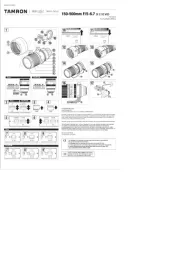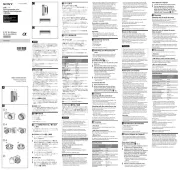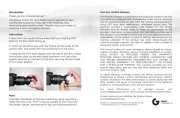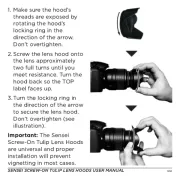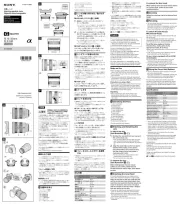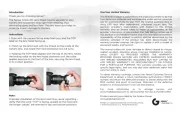Disposal of Electrical and Electronic Equipment in Private Households.
Disposal of used Electrical & Electronic Equipment (Applicable in the
European Union and other European countries with separate collection
systems)
This symbol indicates that this product shall not be treated as household waste.
Instead it shall be collected separately for the recycling of electrical and
electronic equipment.
If the new products are purchased, this product might be handed over to the distributor or
the collection system of waste electrical and electronic equipment eventually.
By ensuring this product is disposed of correctly, you will help prevent potential negative
consequences for the environment and human health, which could otherwise be caused by
inappropriate waste handling of this product or components of this product.
If this product is disposed illegally, it might cause a possibility of penalties. For more detailed
information about recycling of this product, please contact your local Civic Ofce, your
household waste disposal service or the shop where you purchased the product.
Thank you for purchasing the Tamron lens as the latest addition to your photographic equipment.
Before using your new lens, please read the contents of this Owner’s Manual thoroughly to
familiarize yourself with your lens and the proper techniques for creating the highest quality
images possible. With proper handling and care, your Tamron lens will give you many years of
photographing beautiful and exciting pictures.
•
Explains precautions that help to prevent problems.
•
Explains things you should know in addition to basic operations.
PART NAMES (Refer to Fig. )
①
Lens hood
②
Hood attaching alignment mark
③
Hood locking mark
④
Filter ring
⑤
Hood release mark
⑥
Focus ring
⑦
Zooming ring
⑧
Focal length scale
⑨
Focal length mark
⑩
Zoom lock switch
⑪
VC (Vibration Compensation) switch
⑫
AF/MF switch
⑬
Lens attachment mark
⑭
Lens-camera interface contacts
MAIN SPECIFICATIONS
Model A043
Focal Length 35-150 mm
Maximum Aperture F/2.8-4
Angle of View 63
˚
26
'
- 16
˚
25
'
Lens Construction 14/19
Minimum Focus Distance 0.45 m (17.7
"
) (entire zoom range)
Maximum Magnication Ratio 1:3.7 (at 150 mm)
Filter Size
ø
77 mm
Length for Canon 126.8 mm (5")
for Nikon 124.3 mm (4.9")
Diameter
ø
84 mm
Weight for Canon 796 g (28.1 oz)
for Nikon 790 g (27.9 oz)
Lens Hood HA043
•
Length: From mechanical tip of lens to mount surface.
•
Features and appearances of lenses listed in this owner's manual are subject to change without
notice.
ATTACHING AND REMOVING THE LENS
Remove the rear cap of the lens. Align the lens attachment mark
⑬
and mounting mark on the
camera, and then insert the lens.
Turn the lens clockwise for Canon models or counterclockwise for Nikon models until it locks.
To remove the lens, turn the lens in the opposite direction while pressing the lens release button
on the camera.
•
Turn off the power of the camera before attaching or removing the lens.
•
In the case of Canon cameras, align with the EF lens mark (red circle).
•
For details, please read the instruction manual of your camera.
SWITCHING FOCUS MODE (Ref. Figs. - )
To shoot using autofocus (AF), set the AF/MF switch
⑫
to “AF”. (Ref. Fig.
)
To shoot using manual focus (MF), set the AF/MF switch
⑫
to “MF”, and then use your hand to
turn the focus ring
⑥
and focus the image. (Ref. Figs.
,
)
•
In AF mode, it may be difcult for autofocus to work depending on the subject.
•
For details, please read the instruction manual of your camera.
VC MECHANISM (Ref. Figs. ),
The VC (Vibration Compensation) mechanism reduces image blur caused by hand-held shooting.
How to use VC (Ref. Fig.
)
When you use VC, set the VC switch
⑪
to ON.
Press the shutter button halfway and conrm that the viewnder image is stable before taking
a picture.
VC is effective under the following conditions
•
Dimly lit locations
•
Locations where ash photography is prohibited
•
Locations where tripod cannot be used
VC may not perform sufciently under the following conditions
•
When a photograph is taken from a vehicle that is shaking greatly
•
Shooting during excessive movement of the camera
•
When shooting while using a tripod
•
Set the VC switch
⑪
to OFF when taking pictures with bulb photography (long exposures).
Otherwise, VC may cause a malfunction.
•
The viewnder image may become blurred immediately after the shutter button is pressed
halfway. This is due to the principles of VC and not a malfunction.
•
When the VC switch
⑪
is set to ON, the total number of recordable images will reduce due to
power being consumed from the camera.
•
Set the VC switch
⑪
to OFF when you are shooting while the camera is secured by something
other than your hand (such as a tripod).
•
Do not remove the lens from the camera while VC is on. If the lens is removed while VC is on, the
lens may make a clicking sound if the lens is shaken. This is not a malfunction. If the lens is
installed on the camera, and the camera’s power is switched on, the sound stops.
•
For Nikon cameras equipped with a built-in ash, VC will be turned off while the built-in ash is
charging.
ZOOMING (Ref. Figs. ),
While looking through the camera’s viewnder, rotate the zooming ring
⑦
of the lens to set the
focal length suitable for the image, and then shoot.
ZOOM LOCK MECHANISM (Ref. Figs. ), ,
You can lock the zooming ring
⑦
at a focal length of 35mm to keep it from rotating.
Setting the zoom lock (Ref. Fig.
)
Align 35mm on the focal length scale
⑧
with the focal length mark
⑨
.
Push the zoom lock switch
⑩
toward the camera.
Releasing the zoom lock (Ref. Fig.
)
Push the zoom lock switch
⑩
toward the subject.
•
To zoom, release the lock, and then rotate the zooming ring.
LENS HOOD (Ref. Figs. - ),
A bayonet-type lens hood
①
is provided as standard equipment.
We recommend shooting with the hood properly attached because the lens hood eliminates stray
light that may affect the picture.
Using the lens hood (Ref. Figs.
,
)
Align the hood attaching alignment mark
②
of the hood with the hood release mark
⑤
of the
lens.
Rotate the hood
①
in the direction of the arrow until the hood locking mark
③
meets the hood
release mark
⑤
.
Stowing the lens hood (Ref. Fig.
)
You can stow the lens hood
①
by attaching it in reverse.
Align the hood locking mark
③
of the hood with the hood release mark
⑤
of the lens.
Rotate the hood
①
in the direction of the arrow until the hood attaching alignment mark
②
meets the hood release mark
⑤
.
•
Be aware that the perimeter of the photographed image may be darkened if the hood
①
is not
attached properly.
PRECAUTIONS WHEN SHOOTING
•
An internal focusing (IF) system is employed to reduce the minimum focus distance. Because of
this, the angle of view may be wider than that of lenses using other focusing systems when
shooting at a distance less than innity.
•
Always remove the hood when you use the built-in ash on the camera for ash photography.
Otherwise, the hood or lens may darken the perimeter of the image. With close-up photography,
the lens itself blocks the ash, and dark semicircle may appear at the bottom of the screen, even
when the lens hood is not used. For ash photography, we recommend that you use an external
ash unit recommended by the camera manufacturer.
•
Differences in the display systems of cameras may result in the display of values different from
the maximum and minimum aperture values in the specications. This is not an indication of an
error.
•
For information on the compatibility of the product with cameras, see our website.
https://www.tamron.jp/en/support/
TO ENSURE LONG-TERM SATISFACTION
•
Remove dust and soiling on the lens by using a blower or soft brush. Do not touch the lens with
your ngers.
•
The lens surface of the front element has been coated to prevent water and oily substances from
adhering. Since it will repel water, do not use lens cleaners or other substances but only a dry
cloth to clean the front element.
•
To clean the lens surface of the rear element, lightly wipe it starting from the center with a
commercially available lens cleaning paper, a clean cotton cloth or a microber cloth (cleaning
cloth for glasses, etc.) soaked in lens cleaner. Do not use a silicone cloth.
•
Clean the lens barrel using a silicone cloth. Never use benzene, thinner, or other organic
solvents.
•
Mildew is a major problem for lenses. Store your lens in a clean, cool, and dry place. When you
store the lens in a lens case, store it with a commercially available drying agent and replace the
drying agent occasionally.
•
Do not touch the lens-camera interface contacts. If dust or stains cause contact problems,
signals are not transmitted properly between the lens and camera, and malfunctions may occur.
•
If the temperature changes suddenly, moisture may form within the camera and lens and cause
malfunctions. To prevent this, seal your equipment in a plastic bag or similar container. After your
equipment has adjusted to the ambient temperature, remove it from the bag and use it as usual.



